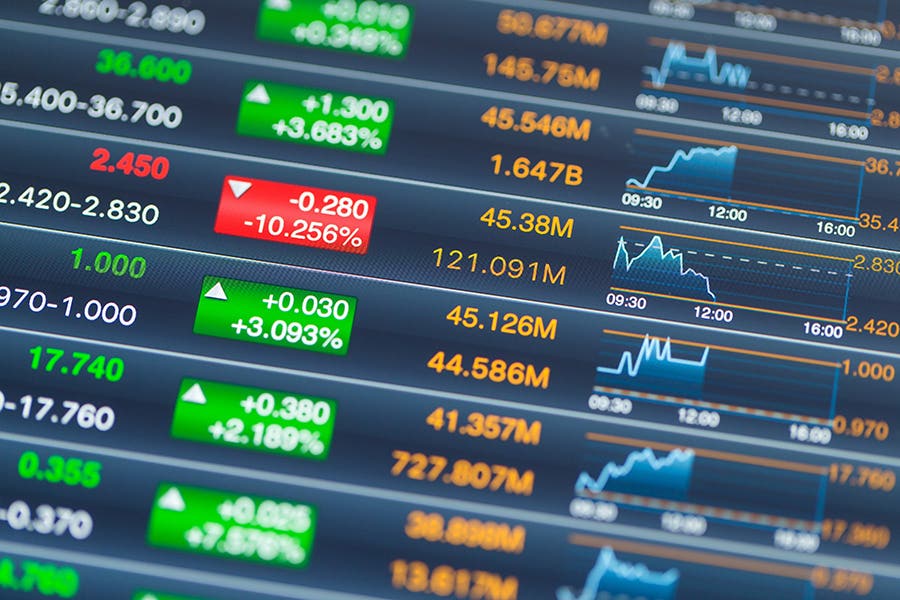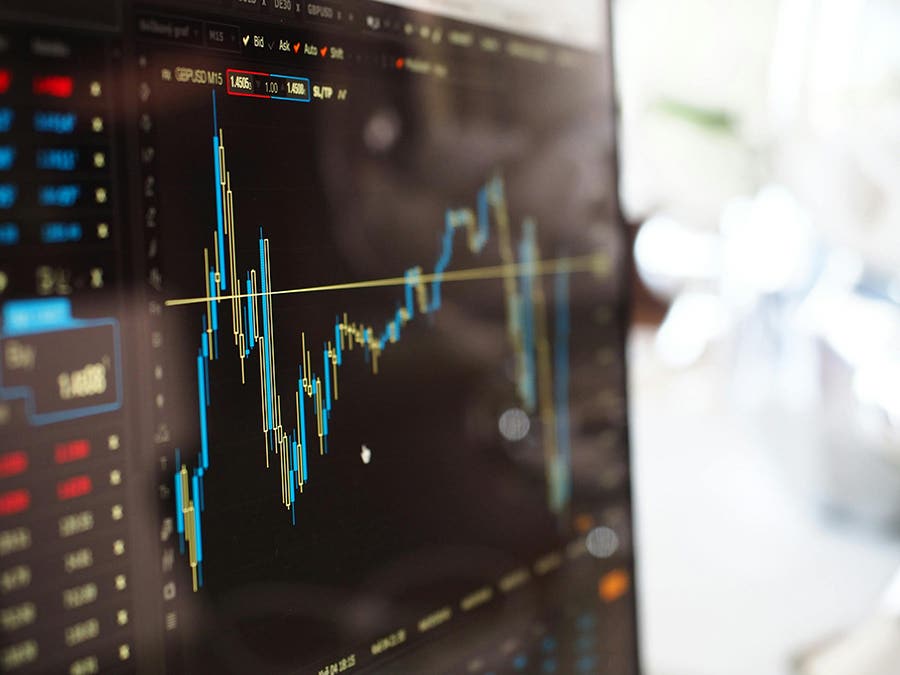Is a Silver Supply Squeeze Coming?
The New York COMEX serves investors and speculators who want to trade in the price of a commodity but have no interest in handling the physical items. The most widely…
The New York COMEX serves investors and speculators who want to trade in the price of a commodity but have no interest in handling the physical items. The most widely traded gold futures contract is for a 100-ounce ingot. The highest volume silver futures contract is 5,000 ounces, consisting of five 1,000-ounce ingots.
Those who are only trading on the price normally close out their positions before contract maturity. They have the option to close out their position altogether or, if they want to remain in the market, they replace their soon-to-expire contract with another one that matures further into the future.
If held to maturity, the party that owns the long side of a futures contract can ask for delivery of the underlying physical asset. The party on the short side of this contract has four options on how they can satisfy their obligation to “deliver.”
Normally, the least expensive option would be to deliver the physical assets from a COMEX bonded warehouse. Alternatively, if the counter-party will accept it, the short seller can make a cash settlement. Or, if both parties agree, shares of an exchange traded fund for that amount of the commodity plus some cash.
Finally, in what used to be considered only an emergency option, a maturing contract called for delivery can be settled by “exchange for physical.” Using this alternative in precious metals markets, the short seller pays some cash plus delivers a London Bullion Market Association contract for delivery of the same quantity of metal.
Because, in theory, most trading of commodities on the COMEX will never be settled in physical delivery, the COMEX only keeps inventories in its warehouses that cover just a fraction of open futures contracts.
With only fractional coverage of open futures contracts, if there were a sudden surge in maturing contracts called for delivery, you could have a market supply squeeze that could lead to a soaring commodity price.
It is possible that a supply squeeze could hit the COMEX silver market in the next few weeks.
Over the past few decades, there has generally been a shortage of newly mined and recycled silver supplies to cover industrial and investment demand. Right now, Chinese manufacturers are having difficulty finding sufficient silver inventories to continue production of solar panels and other goods.
The current active month of COMEX silver trading is in transition from September 2023 to December 2023. Many investors are closing out the September contracts that will expire before the end of August to replace them with December or further out contracts.
But, something strange is happening.
As of last Friday, there were still almost 95,000 September contracts still open, representing 474 million ounces of silver. This is about 40,000 more contracts, representing 200 million ounces of silver, higher than typical for this close to the contract expiration date.
Is it possible that one or more parties are seeking to acquire physical silver by holding a long position in these excess silver contracts with the intentions to demand delivery upon maturity?
I don’t know. There is at least one rumor that it is possible that some Chinese manufacturers may be going this route to acquire silver that they are unable to obtain through standard channels.
If this were to occur, could the COMEX cover?
No, it could not.
As of last Friday, the COMEX only had 31.7 million ounces of registered silver in its bonded warehouses that are committed to deliver against contracts called for delivery. There were another more than 240 million ounces of eligible silver inventories in COMEX warehouses, but these are not available to deliver against maturing futures contracts unless the owners are willing to have them reclassified to being registered inventories.
As it stands right now, there exists the possibility of a severe silver market squeeze before the end of August. If it comes to pass, what could happen to the price of silver?
For guidance, let’s look back at when this happened 25 years ago.
Warren Buffett’s 1998 Silver Supply Squeeze
In the middle of 1997, the price of silver was around $4.50. Billionaire Warren Buffett judged that this was a bargain price. His Berkshire Hathaway began buying COMEX silver contracts with a maturity of March 1998.
These purchases, which eventually totaled 129 million ounces, were spread out so as to minimize the risk that the price could rise against him and his company.
In February 1998, he announced that, instead of rolling over his maturing contracts into the future, he wanted physical delivery of the metal upon contract maturity!
There were simply not sufficient COMEX silver inventories to cover all of these deliveries. Short sellers were scrambling to find any available physical silver they could acquire to be able to deliver to Berkshire Hathaway.
The price of silver peaked around $7.30 in mid-February, a jump of more than 60 percent from mid-1997. Then Buffett let the short sellers off the hook. He would accept delayed delivery of the physical silver if the short sellers would make it worthwhile to him. While I have never seen an official statement, the rumor was that short sellers had to pay Berkshire Hathaway 50 cents per ounce to get the delivery extension.
The Berkshire Hathaway silver inventories eventually were deposited into a silver exchange traded fund, where the company reported that it had liquidated this entire position by the end of 2006.
Once the silver supply squeeze subsided, silver’s price slid back down mostly under $6 and even below $5 for the next few years. The silver price did not exceed its mid-February 1998 peak until early 2004.
This Time Would Be Different
If there really does develop a supply squeeze in the silver market, it would almost certainly result in a quick jump in the price. However, unlike what happened 25 years ago, don’t expect to see much fall back in the price.
That’s because there would be a major difference in this year’s supply squeeze and what happened with Berkshire Hathaway’s silver.
Twenty-five years ago, the Berkshire Hathaway inventory purchases continued to represent supply that could be sold back onto the market. If a silver squeeze happens soon to provide inventory to manufacturers, this will not be available for resale onto the market.
Possible Supply Squeeze Would Not Occur in a Vacuum
If it turns out that there is a major attempt to acquire silver for manufacturing purposes rather than for investment and speculation, this will not happen in a vacuum. Other parties who are concerned about rising silver prices also boosting the price of gold will be watching – and taking action.
The U.S. government would have the most to lose from rising silver and gold prices as the U.S. dollar would lose value. The result would be higher interest costs on U.S. government debt, among a wide range of other negative consequences.
So, if there really was a prospect of a major silver supply squeeze, how would the federal government try to stop it?
First, it would put pressure on the primary trading partners of the Federal Reserve Bank of New York, allied central banks, the International Monetary Fund and the Bank for International Settlements to go to great lengths to suppress gold and silver prices before the supply squeeze hit. It is possible that is happening right now.
Next, it would coordinate with JPMorgan Chase to leverage potentially hundreds of millions of ounces of silver inventories in the bank’s vaults, some of it owned by the bank and some by bank customers. If necessary, it might offer a fee to temporarily borrow physical silver to meet the demand to deliver metal. In the most extreme circumstance, this silver might be delivered even without permission from the current owners to do so.
Should a potential supply squeeze be averted over the next few weeks, that would not have the same impact on silver’s price as happened 25 years ago. This time around, the physical silver would mostly need to be returned. That means there would be a continuing shortage of physical silver on the market.
Also, as manufacturers and investors come to realize just what is happening in the silver market, they will also ramp up their demand to acquire the physical metal.
Summary: There may or may not be a spike in silver’s price in the next few weeks. It could be that last Friday’s anomaly of an extra 40,000 open silver contracts representing 200 million ounces could just be an unusual timing problem for the party or parties that own them.
But, even if a physical silver supply squeeze does not develop over the next few weeks, the shortage of silver inventories to meet manufacturing demand in China and elsewhere will still put upward pressure on silver’s future price. This development would also lead to greater demand for gold, pushing up that price as well.
Patrick A. Heller was honored as a 2019 FUN Numismatic Ambassador. He is also the recipient of the American Numismatic Association 2018 Glenn Smedley Memorial Service Award, 2017 Exemplary Service Award, 2012 Harry Forman National Dealer of the Year Award and 2008 Presidential Award. Over the years, he has also been honored by the Numismatic Literary Guild (including in 2021 for Best Investment Newsletter), Professional Numismatists Guild, Industry Council for Tangible Assets and the Michigan State Numismatic Society. He is the communications officer of Liberty Coin Service in Lansing, Mich., and writes Liberty’s Outlook, a monthly newsletter on rare coins and precious metals subjects. Past newsletter issues can be viewed at www.libertycoinservice.com. Some of his radio commentaries titled “Things You ‘Know’ That Just Aren’t So, And Important News You Need To Know” can be heard at 8:45 a.m. Wednesday and Friday mornings on 1320-AM WILS in Lansing (which streams live and becomes part of the audio archives posted at www.1320wils.com).








